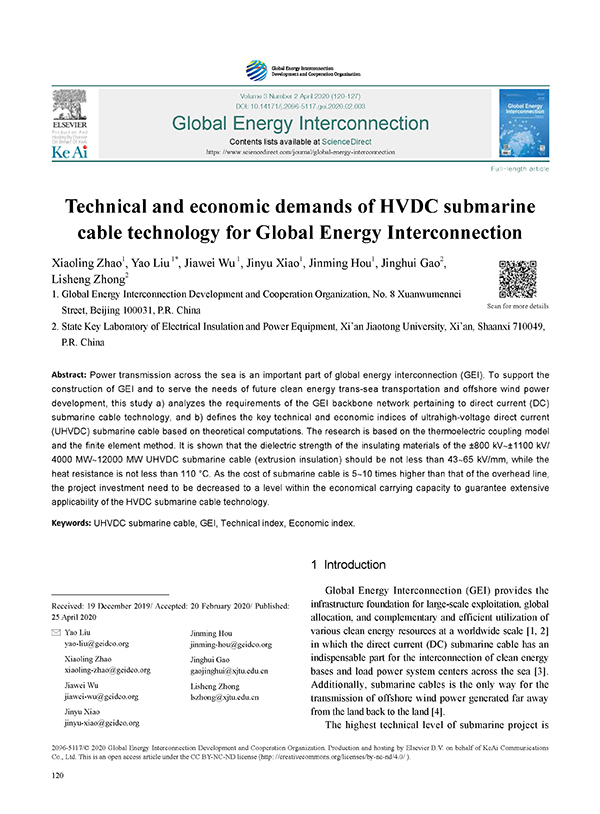 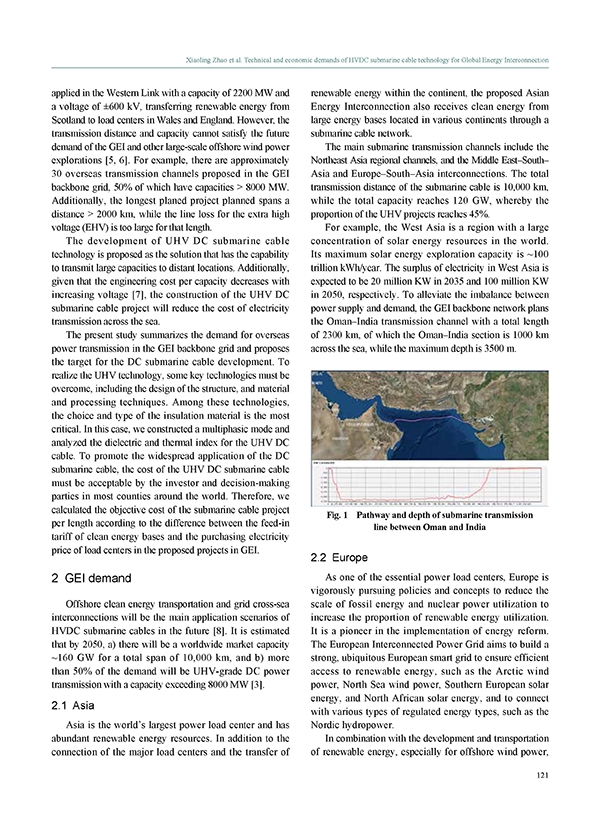 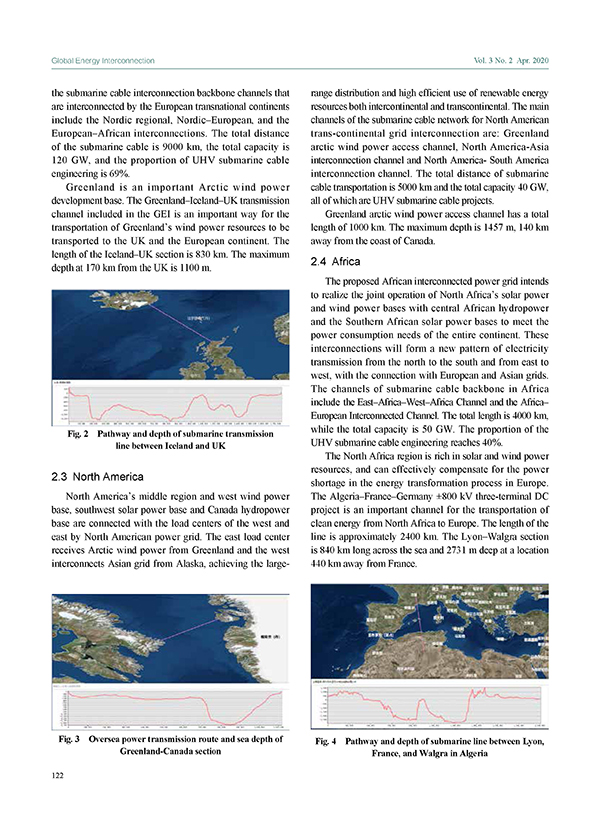  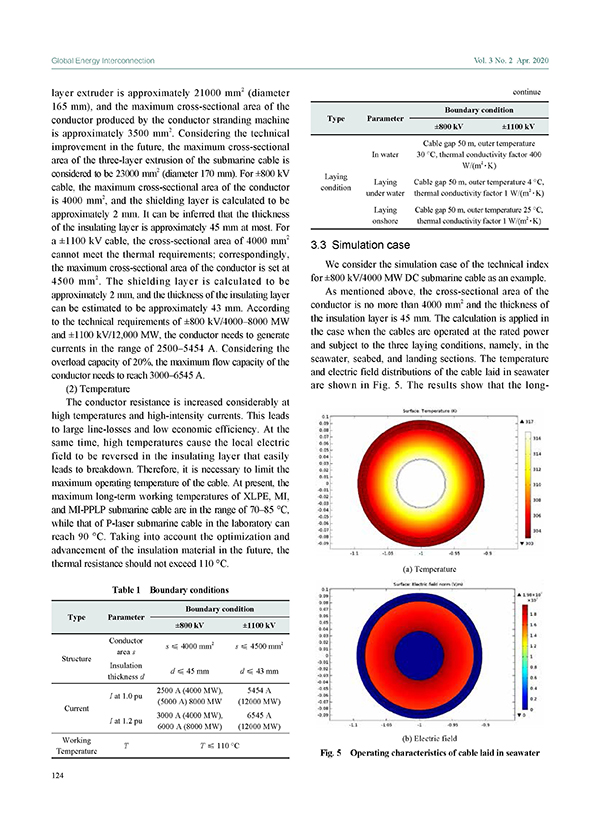 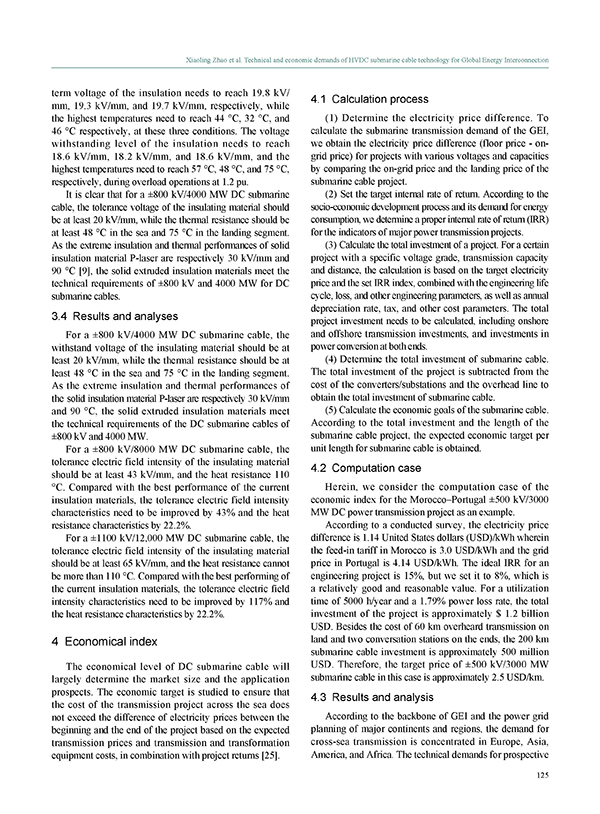 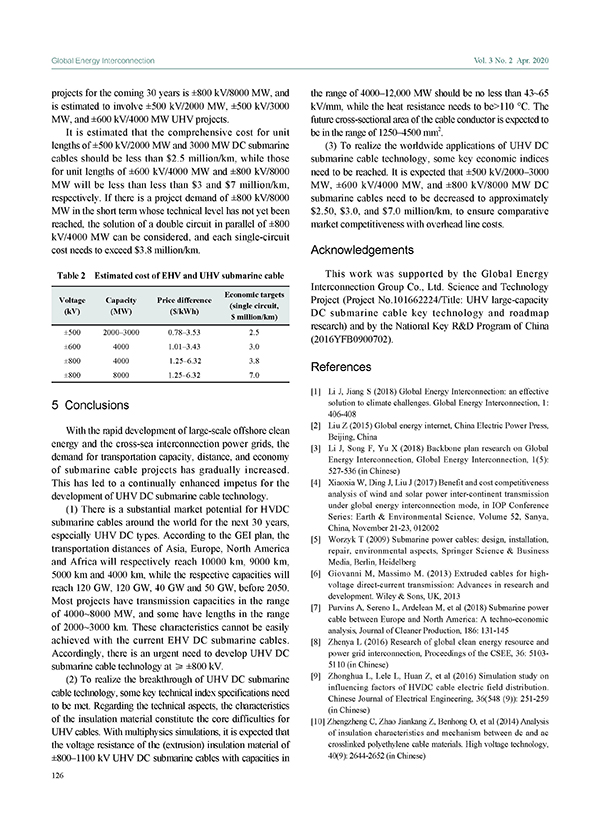 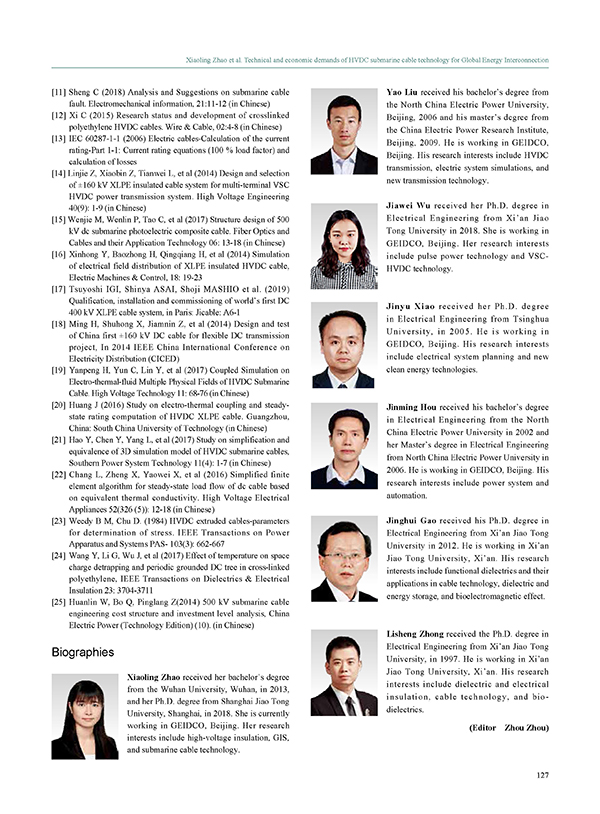 |
|---|
Technical and economic demands of HVDC submarine cable technology for Global Energy Interconnection
Xiaoling Zhao1, Yao Liu 1*, Jiawei Wu 1, Jinyu Xiao1, Jinming Hou1, Jinghui Gao2, Lisheng Zhong2
1.Global Energy Interconnection Development and Cooperation Organization, No. 8 Xuanwumennei Street, Beijing 100031, P.R. China
2.State Key Laboratory of Electrical Insulation and Power Equipment, Xi’an Jiaotong University, Xi’an, Shaanxi 710049
Abstract
Power transmission across the sea is an important part of global energy interconnection (GEI). To support the construction of GEI and to serve the needs of future clean energy trans-sea transportation and offshore wind power development, this study a) analyzes the requirements of the GEI backbone network pertaining to direct current (DC) submarine cable technology, and b) defines the key technical and economic indices of ultrahigh-voltage direct current (UHVDC) submarine cable based on theoretical computations. The research is based on the thermoelectric coupling model and the finite element method. It is shown that the dielectric strength of the insulating materials of the ±800 kV~±1100 kV/ 4000 MW~12000 MW UHVDC submarine cable (extrusion insulation) should be not less than 43~65 kV/mm, while the heat resistance is not less than 110 °C. As the cost of submarine cable is 5~10 times higher than that of the overhead line, the project investment need to be decreased to a level within the economical carrying capacity to guarantee extensive applicability of the HVDC submarine cable technology.
Keywords: UHVDC submarine cable, GEI, Technical index, Economic index.
目录
